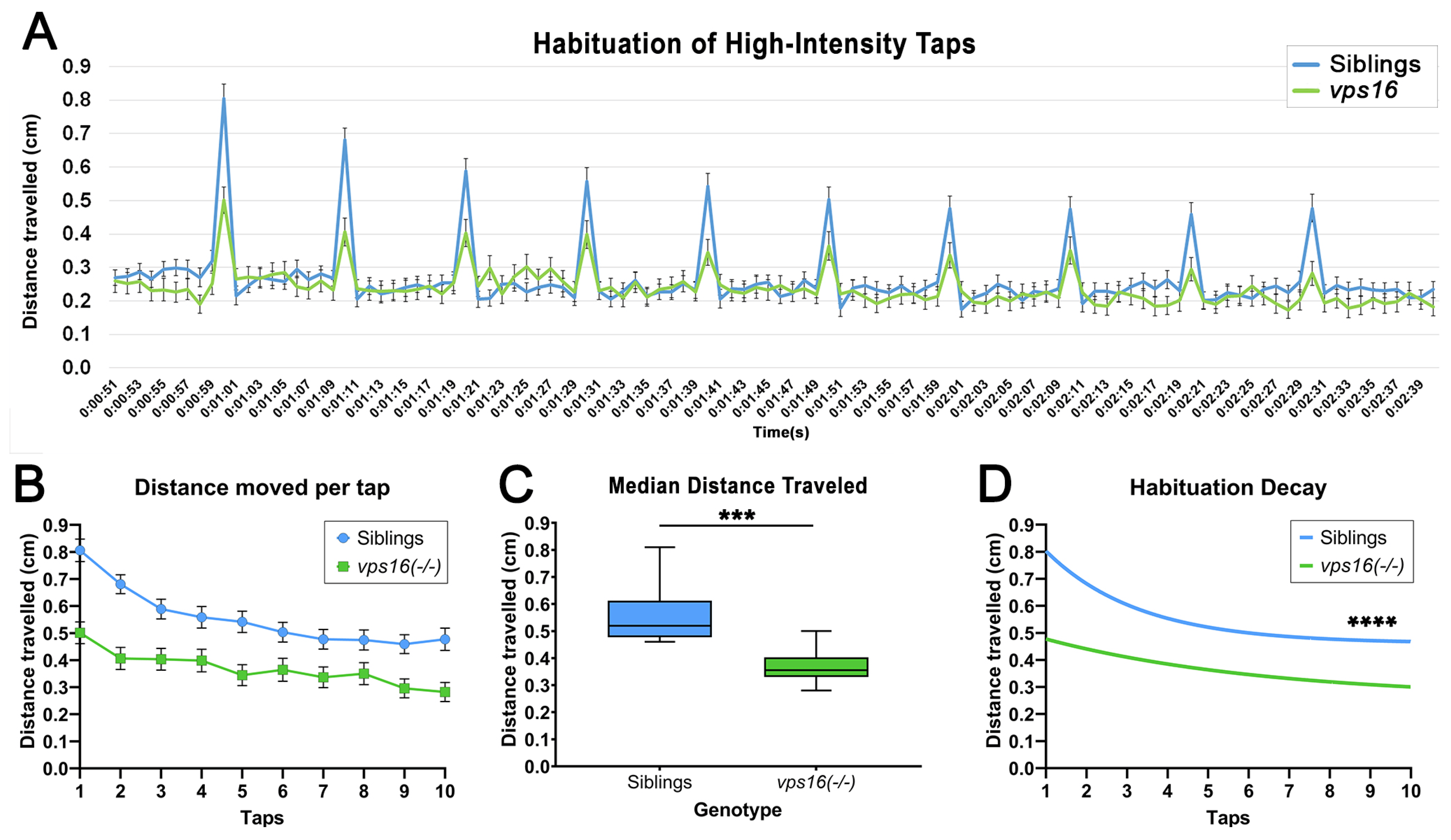Fig. 6 vps16(-/-) mutants at 7 dpf show significantly reduced habituation response to multiple high-intensity acoustic/tap stimuli compared with their siblings. (A) Line graph representing distance traveled by vps16 (-/-) larvae at 7 dpf during complete high-intensity multiple-tap paradigm comprising 10 high-intensity taps with 10 s interstimulus intervals (ISIs) (sibling in blue, vps16(-/-) in green). (B) Graph representing average distance moved by 7 dpf siblings (blue; n = 84) and vps16(-/-) (green; n = 78) larvae at each individual tap stimuli. (C) Box plots representing median distance traveled by 7 dpf siblings (blue; n = 84) and vps16(-/-) (green; n = 78) larvae in response to multiple-tap stimuli. “***” = p < 0.001. (D) First-order exponential decay curve representing average distance traveled by 7 dpf siblings (blue; n = 84) and vps16(-/-) (green; n = 78) larvae at each individual tap stimuli. “****” = p < 0.0001. Error bars indicate SEM
Image
Figure Caption
Figure Data
Acknowledgments
This image is the copyrighted work of the attributed author or publisher, and
ZFIN has permission only to display this image to its users.
Additional permissions should be obtained from the applicable author or publisher of the image.
Full text @ Int. J. Mol. Sci.

